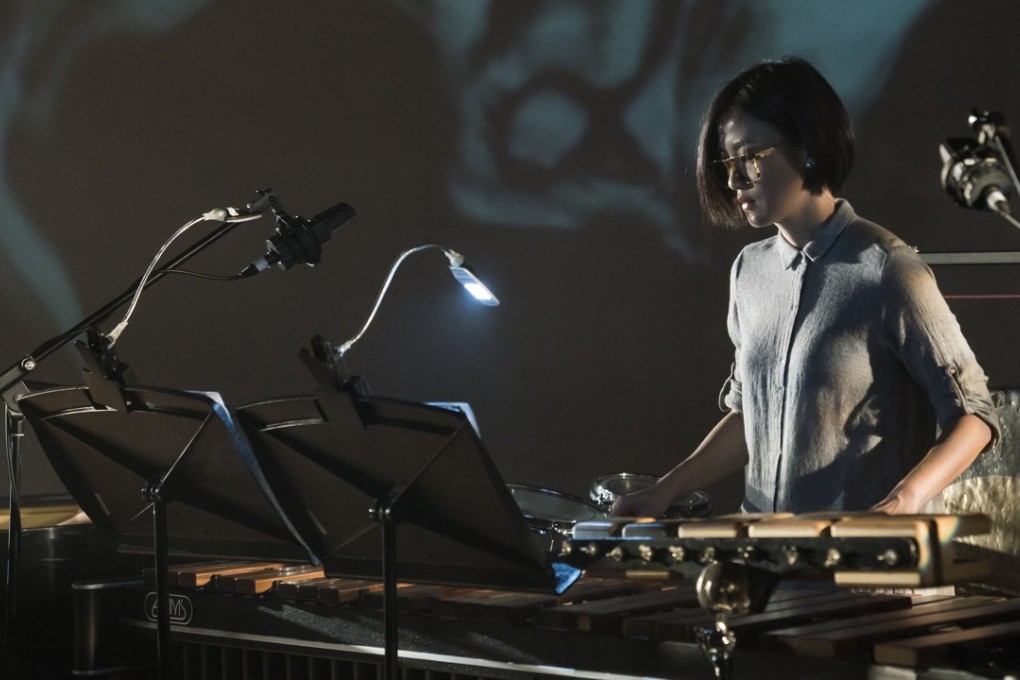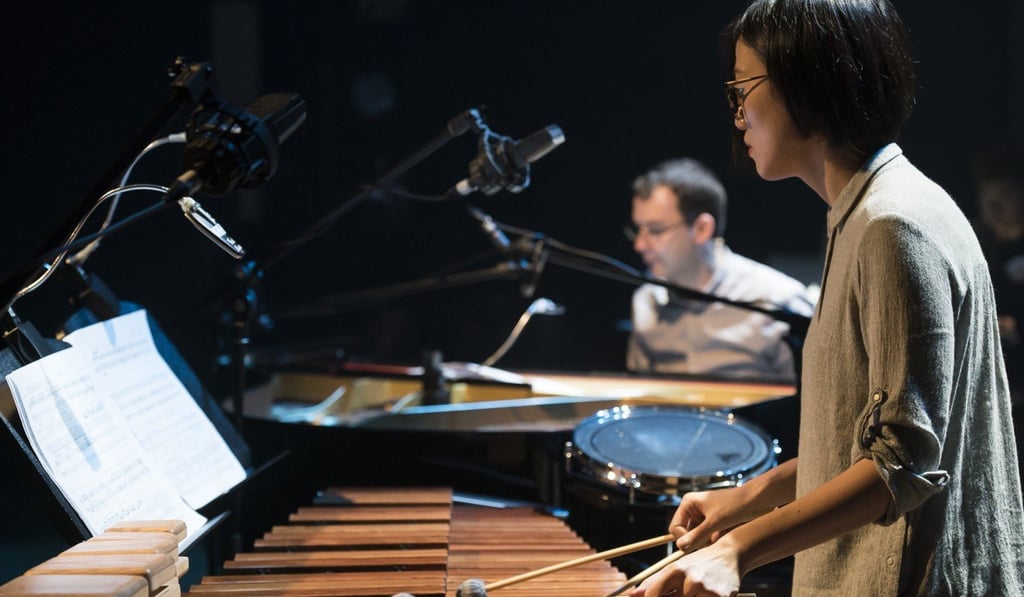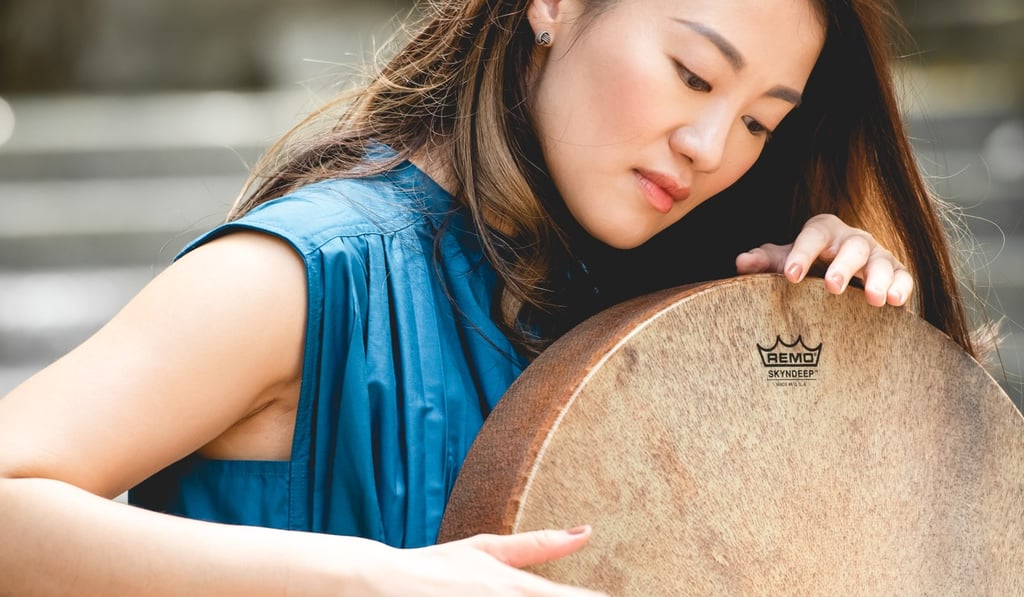How music and sounds add extra dimension to ‘twisted’ fairy tale of Red Riding Hood and hungry wolf
- Hong Kong’s Theatre de la Feuille’s latest production ‘Mad Men (Irregular Version)’, part of November’s ArtSnap at ninth New Vision Arts Festival
- Music designer Heidi Law explains how she uses sound to set the tone of a play

This article is part of a weekly series that dives deep into the small things that add character to our city, enrich our culture and make our lives beautiful.
Five performers are lying face down on the stage.
As a flowing, fairy-tale melody sets in – conjuring up the image of an enchanted forest – one of the performers raises her head and starts telling the story of Little Red Riding Hood.
“One day, mummy told me to visit grandma who is sick. I saw a big grey wolf on my way. He asked me where I was going and I told him. Together we went to Grandma’s place ...”
Then comes a sound of chewing, which is out of sync with the pleasant-sounding melody. Something odd is happening. But what is it?
The chewing grows louder and more disturbing and, before long, the girl yells: “The wolf has devoured Grandma …”
Silence falls. All that can be heard is the girl saying: “… and me too!”
Music and sounds build the mood of a play, which is evident from this scene taken from Mad Man (Irregular Version), the latest work by Hong Kong-based Theatre de la Feuille featured at November’s ArtSnap, during the ninth New Vision Arts Festival.
The annual festival highlights new performing arts talent and cutting-edge productions from around the world.
At the beginning, the fairy-tale melody – an excerpt from The Windcatcher Part III by contemporary composer Philip Glass – sets a magical tone for the scene.
Just as the story seems to be unfolding in a predictable way, the crackling sound of chewing creates an undercurrent of tension.
The dead silence that comes at the end of the scene cements an ominous overtone.

Theatre work and music and sound design are codependent. Music and sounds create an extra dimension to theatre work
Using different bits and pieces of music and sounds in the right place at the right time enhances the dramatic effect of a performance – and keeps the audience captivated throughout.
Compared with the plot or an actor’s performance, music and sounds are often deemed secondary in a theatre production. Yet this is a misconception.
Music and sound do more than set the tone of a play or reveal the emotional life of a character – as illustrated by many memorable theme songs and poignant solos in Broadway and West End shows.
They also provide background sound, draw attention to the action on stage and drive plot development between scenes, all of which are essential – however unnoticeable to many of us – to connecting the audience to the performance.
“Theatre work and music and sound design are codependent,” Heidi Law Hoi-yan, music designer of Mad Man (irregular Version), says.
“The work itself is an inspiration to music design, while music and sounds create an extra dimension to theatre work.”

In addition to contemporary music pieces, Law has incorporated sounds from everyday life, such as chewing and breathing, as well as live music into the production.
I like incorporating sounds and noises to create an intense, dramatic impact
“I like incorporating sounds and noises to create an intense, dramatic impact,” she says.
“I use familiar sound frequencies or noises, even if they are monotones or repetitive. I also create live music or sounds and add them on top of a pre-recorded track.”
In another scene from Mad Man (irregular Version), for example, Law plays a rumbling white noise in the background to produce the optimal stage effect.
At the beginning of the scene, which explores the issue of conformity, an actor looks out towards the audience while another stands behind him, but with his back facing the front.
The perfectly still setting is broken by the sound of a dog barking. The second actor turns around. He starts admiring the first actor’s trousers.
This is the point when Law plays the low-frequency white noise. There is nervousness in the air, but the audience is unaware of what it is, or how it will develop.
“The second actor demands that the first actor hand over his trousers, but he is reluctant to do so,” Law says.
“Here I play a motif from Olivier Messiaen’s Oraison on bowed glockenspiel [a keyboard-like percussion instrument] and melodeon to produce a strained feeling of suspense.”
In the end, the first actor gives in and hands over his trousers. He gets the other actor’s trousers in return.
The first actor turns to the front once again, while the other actor stands with his back facing the audience.
Just as things seem to have settled down, the dog barking sound – which turns out to be a representation of the second actor – is heard again. He turns around and demands another exchange of trousers.
The interaction is repeated a few times. Law steps up the intensity of the music to increase the sense of urgency and anxiety at the beginning of every exchange.

“What the second actor wants is not the trousers; he is simply being covetous,” Law says.
“More people are coming onto the stage and telling the first actor that they too want his trousers.
“Yielding to peer pressure, he takes off his trousers before anyone explicitly demands him to do so. He wants to fit into the “structure” of his society.”
Law now puts on Oraison at normal volume.
With its recurring, atonal motif and dissonant chords, the piece conveys the suffocating feeling that nothing can be resolved.
The music is all the more important because there is no dialogue in this scene.
Law says that while music and sounds play an integral role in creating the pace and tone for theatrical development and in communicating with an audience, they are also useful tools for actors.
They amplify an actor’s actions, expressions and energy, and offer cues – especially when actors cannot use their eyesight, such as when they are doing a headstand, or forming a human pyramid and need to listen to music and sounds as signals for when to raise their heads or jump back down to the ground.
“In an intricate setting, such as a ‘black box’ theatre [a simple indoor performance space with plain black walls and a level floor] and in performances using very few props, music gives confidence and assurance to actors,” Law says.